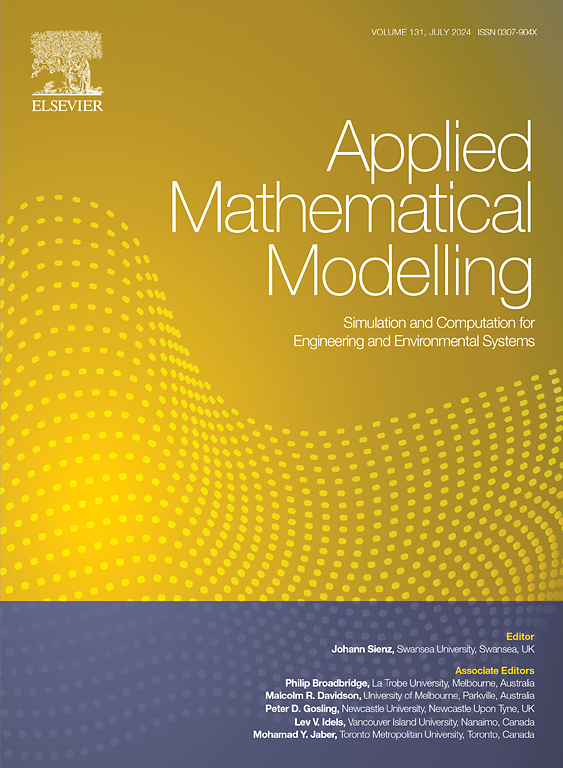一个无人机辅助的最后一英里交付框架,用于灾后和高需求时期的发货优先级
IF 4.4
2区 工程技术
Q1 ENGINEERING, MULTIDISCIPLINARY
引用次数: 0
摘要
灾难过后,由于当地供应减少,人们对网上购物和送货的需求会增加。增加的需求可能会导致项目交付的延迟。自然灾害也可能导致流行病和危急的医疗状况。因此,交货既可以包括生活必需品,如药品或医疗设备,也可以包括非必需品,如玩具或装饰产品。类似的情况可能由其他异常情况引起,例如流行病或战争。因此,重要的是确定发货的优先顺序,以牺牲非必需品的延迟为代价,确保生活必需品的早日交付。在这项工作中,我们引入了一个框架来优先考虑无人机辅助的最后一英里交付。虽然该框架是通用的,可用于不同的最后一英里交付类型,但选择无人机辅助交付对于灾后情况非常重要,以便在疫情爆发时实现非接触式交付,并到达由于道路和基础设施受损而车辆无法到达的目的地。我们考虑从高优先级到低优先级的不同优先级。高优先级的项目必须尽快交付,中等优先级的项目必须在一定时间内交付,低优先级的项目可以在满足高优先级和中等优先级条件后交付。引入混合整数方案,对无人机辅助最后一英里配送的优先级方案进行建模,并提出了系统解决该问题的解决框架。最后,我们通过数值案例和模拟说明了该模型的优点,并讨论了其含义。本文章由计算机程序翻译,如有差异,请以英文原文为准。
A drone-assisted last-mile delivery framework for shipment prioritization in post-disaster and high demand periods
The aftermath of a disaster can observe increased demands for online purchases and deliveries due to a decreased local supply. The increased demands may then induce delays in item delivery. Natural disasters may also result in epidemics and critical medical situations. Thus, the deliveries can include both life-essential items, such as medicine or medical equipment, and non-essential items, such as toys or decor products. Similar circumstances may be induced by other abnormal situations, such as pandemics or wars. It is then important to prioritize shipments to ensure early delivery of life-essential products at the expense of delaying non-essential items. In this work, we introduce a framework to prioritize shipments with application on drone-assisted last-mile deliveries. While the framework is general and can be used in different last-mile delivery types, the selection of drone-assisted deliveries is important for post-disaster situations to allow for contactless deliveries in case of epidemic outbreaks, and to reach destinations inaccessible by vehicles due to damaged roads and infrastructure. We consider different priority levels ranging from high priority to low priority items. High priority items must be delivered as soon as possible, medium priority items must be delivered within a certain time frame, and low priority items can be delivered after the high and medium priority conditions are met. We introduce a mixed integer program to model the drone-assisted last-mile deliveries with the prioritization scheme and propose a solution framework to systematically solve the problem. Finally, we illustrate the benefits of the model through numerical cases and simulations, and discuss its implications.
求助全文
通过发布文献求助,成功后即可免费获取论文全文。
去求助
来源期刊

Applied Mathematical Modelling
数学-工程:综合
CiteScore
9.80
自引率
8.00%
发文量
508
审稿时长
43 days
期刊介绍:
Applied Mathematical Modelling focuses on research related to the mathematical modelling of engineering and environmental processes, manufacturing, and industrial systems. A significant emerging area of research activity involves multiphysics processes, and contributions in this area are particularly encouraged.
This influential publication covers a wide spectrum of subjects including heat transfer, fluid mechanics, CFD, and transport phenomena; solid mechanics and mechanics of metals; electromagnets and MHD; reliability modelling and system optimization; finite volume, finite element, and boundary element procedures; modelling of inventory, industrial, manufacturing and logistics systems for viable decision making; civil engineering systems and structures; mineral and energy resources; relevant software engineering issues associated with CAD and CAE; and materials and metallurgical engineering.
Applied Mathematical Modelling is primarily interested in papers developing increased insights into real-world problems through novel mathematical modelling, novel applications or a combination of these. Papers employing existing numerical techniques must demonstrate sufficient novelty in the solution of practical problems. Papers on fuzzy logic in decision-making or purely financial mathematics are normally not considered. Research on fractional differential equations, bifurcation, and numerical methods needs to include practical examples. Population dynamics must solve realistic scenarios. Papers in the area of logistics and business modelling should demonstrate meaningful managerial insight. Submissions with no real-world application will not be considered.
 求助内容:
求助内容: 应助结果提醒方式:
应助结果提醒方式:


